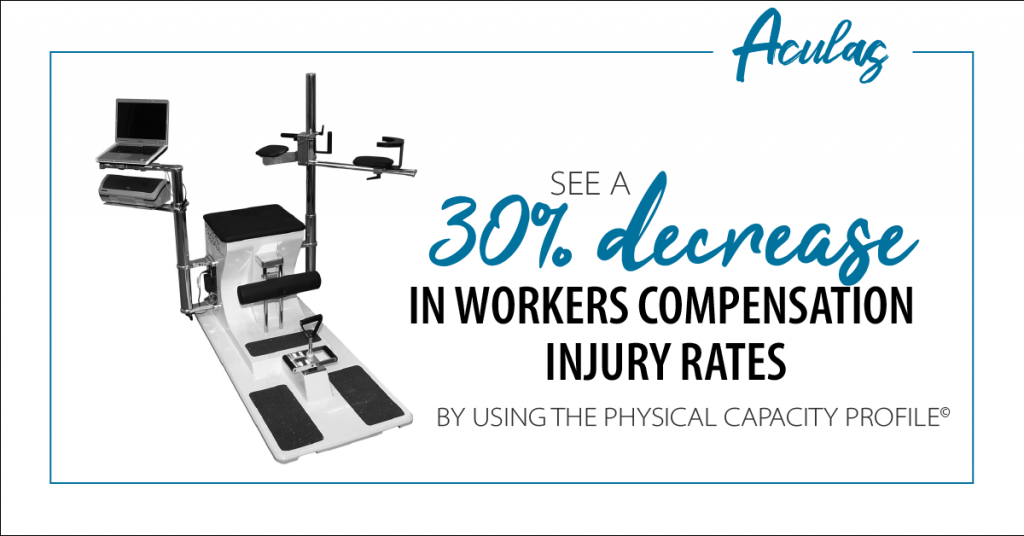We use a super cool machine, called the Physical Capacity Profile, that takes 28 different strength measurements, and uses some pretty nerdy technology to match an employee’s physical abilities with their job.
Here are the highlights of the Physical Capacity Profile:
How it works
- 28 different measurements using both isometric and dynamic lifting
- 30-minute test with results instantly
- 3 page report detailing the results
The Benefits
- 30% decrease in workers compensation injury rates
- Provides a baseline for any pre-existing injuries
- Ensures employees are physically fit for the job
We know we shouldn’t have favorites, but the Physical Capacity Profile (PCP) is our favorite service we provide. Why? Because it uses data.
So, let’s talk about this data (we promise to not go full nerd on you).
Data is really nothing unless it means something, right? Number of sit ups, weight, height, neck circumference, grip strength, etc. – what does any of that really mean? But, what if you were given a report that scored each employee on five different levels and each level was associated with the types of job that they could perform. Well, that’s what the PCP does.
So how does it create this snazzy, highly-objective, data heavy, color coded, easy-to-read-and-understand report? It collects 28 different measurements, plugs it into an algorithm, and voila.
By using the PCP, we are able to help employers reduce injuries by making sure that employees can safely perform their job. Through the PCP, any impairments that the employee has is documented (per the American Medical Association Guidelines), which reduces workers compensation exposure. And that’s not all…the PCP also provides a pre-injury baseline measurements for each employee, which really comes in handy if rehabilitation is needed at any time (you’ll thank us later).
Research has shown that assessing a job’s functions and matching an employee’s abilities significantly reduces injuries in the workplace. Less workplace injury means less employee dissatisfaction, less lost work days, less compensation claims, and less headaches.
Companies who use PCP see a 30% decrease in workers compensation injury rates, which can lead to a 10-30% decrease in workers compensation premiums.
Oh, and the PCP uses the Department of Labor’s (DOL) five classifications of work standards and the American Medical Association (AMA) guidelines. And don’t forget that the PCP testing system is ADA and HIPAA compliant and has successfully undergone EEOC audits. (Mic drop)
Ok, so now do you see why this is our favorite?
If you have questions or want to learn more give us a call at (913) 340-9900 or feel free to email us at [email protected] — we look forward to hearing from you!

